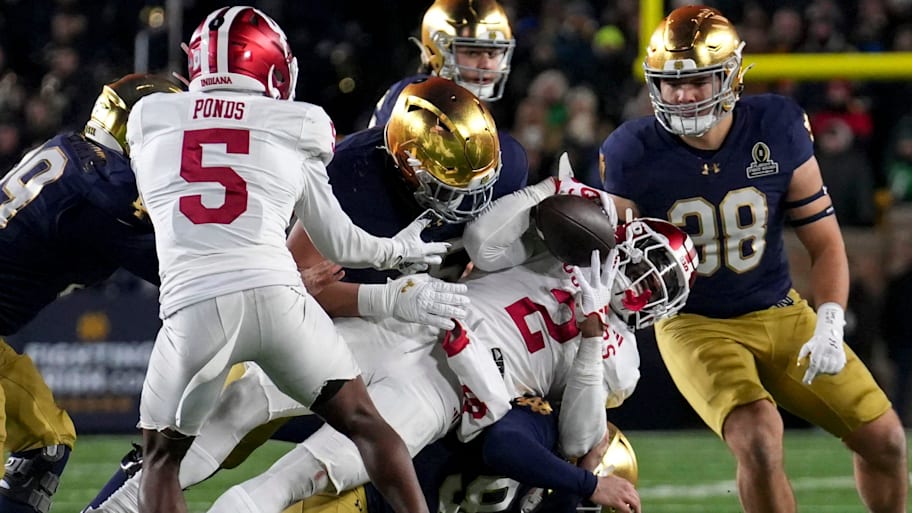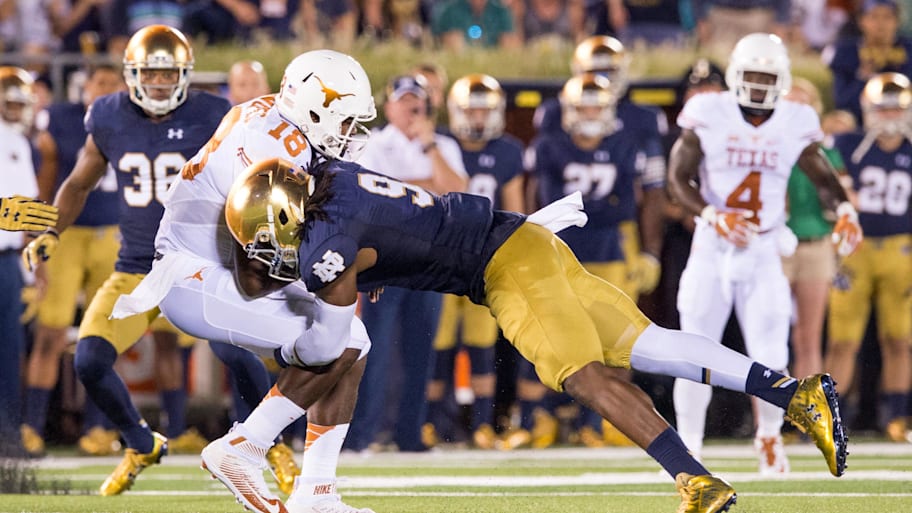
As we've all known for months now, the College Football Playoff is changing the way it operates, but allowing the four highest-ranked teams to hold the top four playoff seeds this season, regardless of conference standings.
That news had been reported long ago but was made official on Wednesday as the CFP put out a press release regarding the changes. One other notable change was mentioned in the release, however, and it's an incredibly important and good one for Notre Dame.
Strength of Schedule's Impact on College Football Playoff Inclusion

How much did the strength of schedule come into play last year when Indiana was selected for the College Football Playoff over the likes of Alabama and South Carolina? Wins and losses should matter, but should Indiana not beating a ranked team all year have been enough to get them in?
I'm not here to argue for or against that, but instead to look at how such an instance could be looked at going forward. Read the following from Wednesday's press release:
Changes for the upcoming season include enhancements to the tools that the selection committee uses to assess schedule strength and how teams perform against their schedule. The current schedule strength metric has been adjusted to apply greater weight to games against strong opponents. An additional metric, record strength, has been added to the selection committee’s analysis to go beyond a team’s schedule strength to assess how a team performed against that schedule. This metric rewards teams defeating high-quality opponents while minimizing the penalty for losing to such a team. Conversely, these changes will provide minimal reward for defeating a lower-quality opponent while imposing a greater penalty for losing to such a team.
Why This is Good News for Notre Dame

A trend in college football has been for teams to ditch big-time out-of-conference games and instead schedule Group of Five or FCS teams in their place. This has created a fear that Notre Dame will get booted off several future schedules, from the likes of Alabama, Florida, Michigan, Indiana, and others, potentially.
Strength of schedule being metric-based and factored in means more schools will continue to create difficult schedules in the non-conference. That means the demand to play Notre Dame then goes up significantly, seeing as the Fighting Irish aren't just a major draw, but have averaged over eight wins a year over the last 20 years.
It may still be a reach, but perhaps this will provide enough of a bump to get USC to not run off Notre Dame's future schedule.
Notable Notre Dame Future Opponents (Non-ACC Deal):
2026: Wisconsin, Michigan State, Purdue,
2027: Purdue, Michigan State, Clemson
2028: Texas, Arkansas, Purdue, Clemson
2029: Alabama, Texas, Clemson
2030: Indiana, Alabama, Clemson
2031: Clemson, Indiana, Florida,
2032: Florida, Clemson
2033: Michigan, Clemson
2034: Michigan, Clemson
More must-reads:
- Ravens sign two-time Pro Bowl safety to four-year extension
- 49ers to sign two-time Super Bowl champion WR
- The 'NFL sack leaders since 2015' quiz
Breaking News
Trending News
Customize Your Newsletter
 +
+
Get the latest news and rumors, customized to your favorite sports and teams. Emailed daily. Always free!








